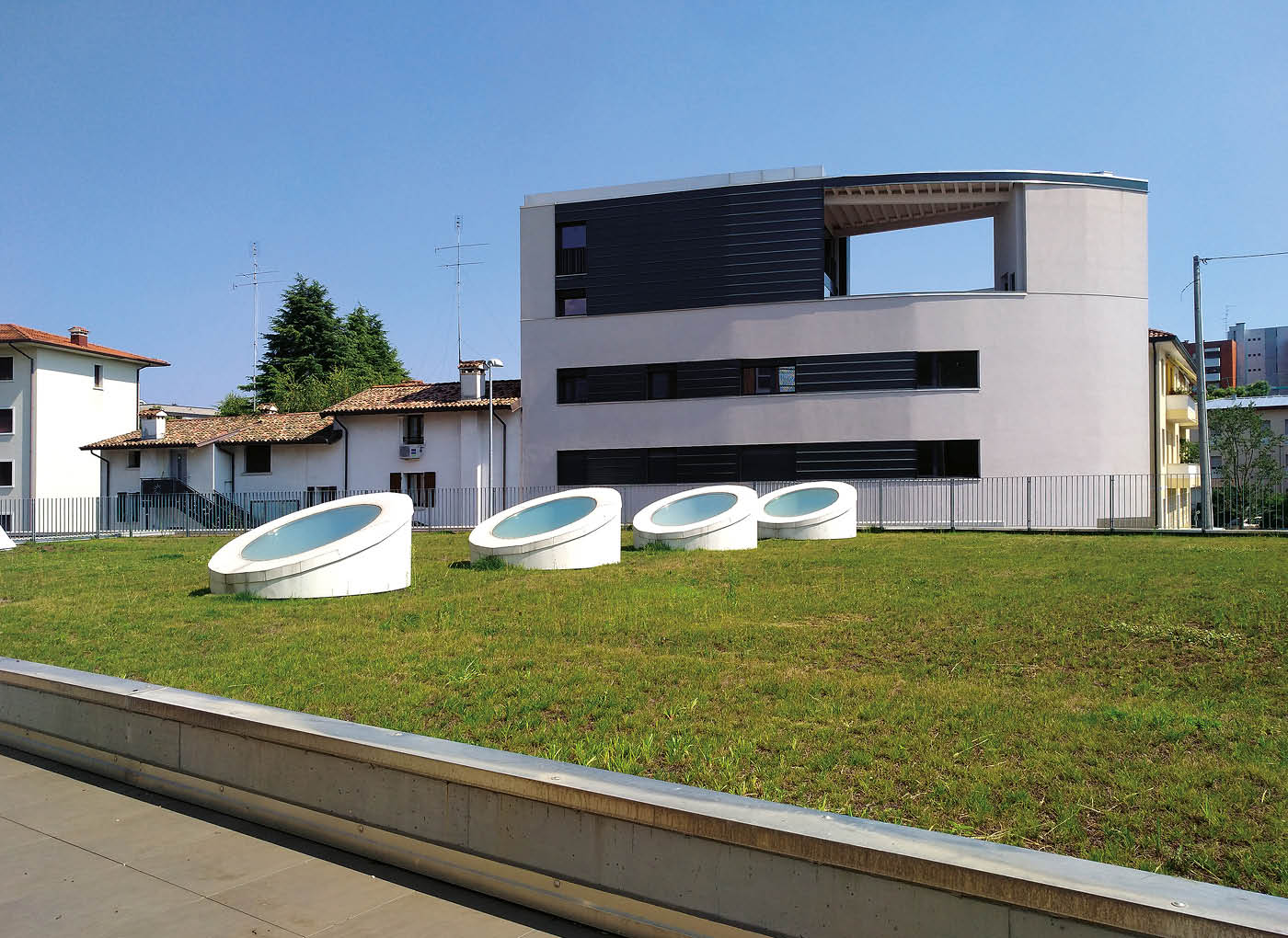The construction of roof gardens and green roofs, both extensive and intensive, is becoming increasingly common in urban environments because of the many advantages they bring both to new buildings and refurbishments, and the areas surrounding them, including:
- improved thermal comfort within buildings (by enhancing insulation and thermal mass) and in the surrounding open spaces (by improving the microclimate and moderating the heat island effect),
- a reduction and delay of stormwater run-offwhich cuts down peak flows in sewers avoiding overload in wastewater system and helps to prevent flooding in urban areas.
- new usable spaces added to buildingsthat make them more attractive (sports areas, gardens, rooftop vegetable gardens, etc.).
- protection for waterproofing systemsthat prolong their life by shielding them from solar radiation and impact damage
- improved urban biodiversityby creating new environments that can be colonised by animals and plants increasing urban wilderness
For the short- and long-term well-being of the plants and for the durability of the system, a good design and a correct selection of the materials to be used are essential.
Green roofs are composed by a complex of technical layers with specific functions: the very good compatibility of Laterlite Agri Expanded Clay with plants makes it ideal for use in some of them, either in intensive or extensive green roofs:
- a lightweight drainage and moisture reserve layerfundamental for the well-being of plants
- a lightweight growth substrate into which vegetation is planted, giving optimal aeration and water retention.
- a mulch that is lightweight, durable, and incombustible and can be used in intensive systems or in planters that contain shrubs or trees.
In addition, lightweight Laterlite screed mortars are ideal for creating the roof falls, on which the waterproofing is applied, at the base of the green Roof system.
Green roof solutions based on Laterlite Expanded Clay allow a significant reduction in the weight of each of the main layers of the system, even in case of water saturation (up to 70 % less than with traditional materials). This makes the design and intervention easier, including in renovation works, in roof slabs with limited load-bearing capacity or in light roof structures (timber houses, steel or timber frame extensions, etc.), even in case of high depth green roof solutions.
Depending on project requirements and climate conditions, the properties of Laterlite Expanded Clay also give green roofs and roof gardens very good thermal resistance and thermal inertia, enabling a very wide range of plant types to be grown on them (such as sedum, herbaceous perennials, lawn, shrubs, trees, etc.).
Based on the depth of planting substrate and the type and amount of needed maintenance, green roofs can be defined as extensive or intensive. See below for more information A green roof can be composed by both an extensive and an intensive part.
CONTACT US











